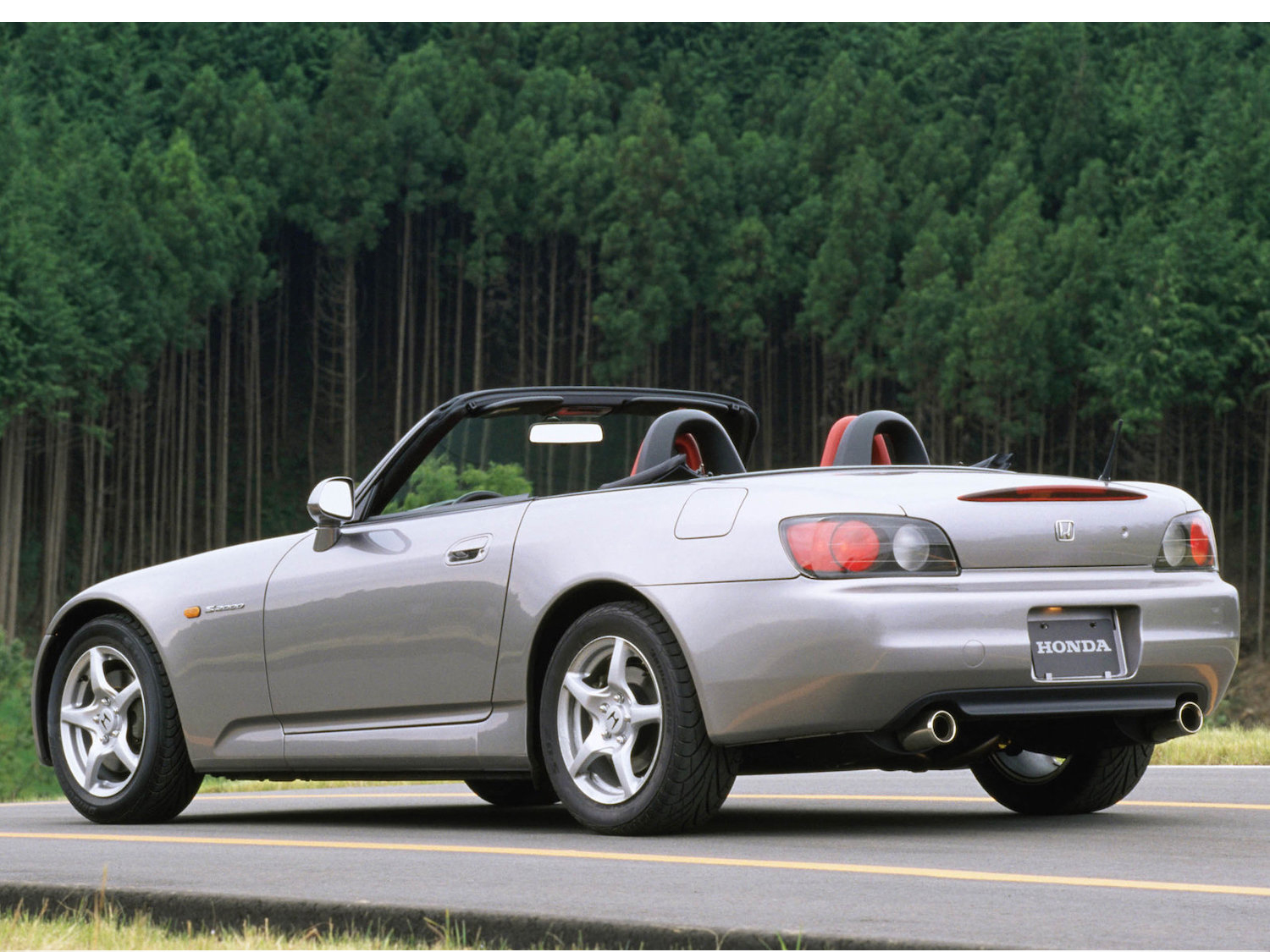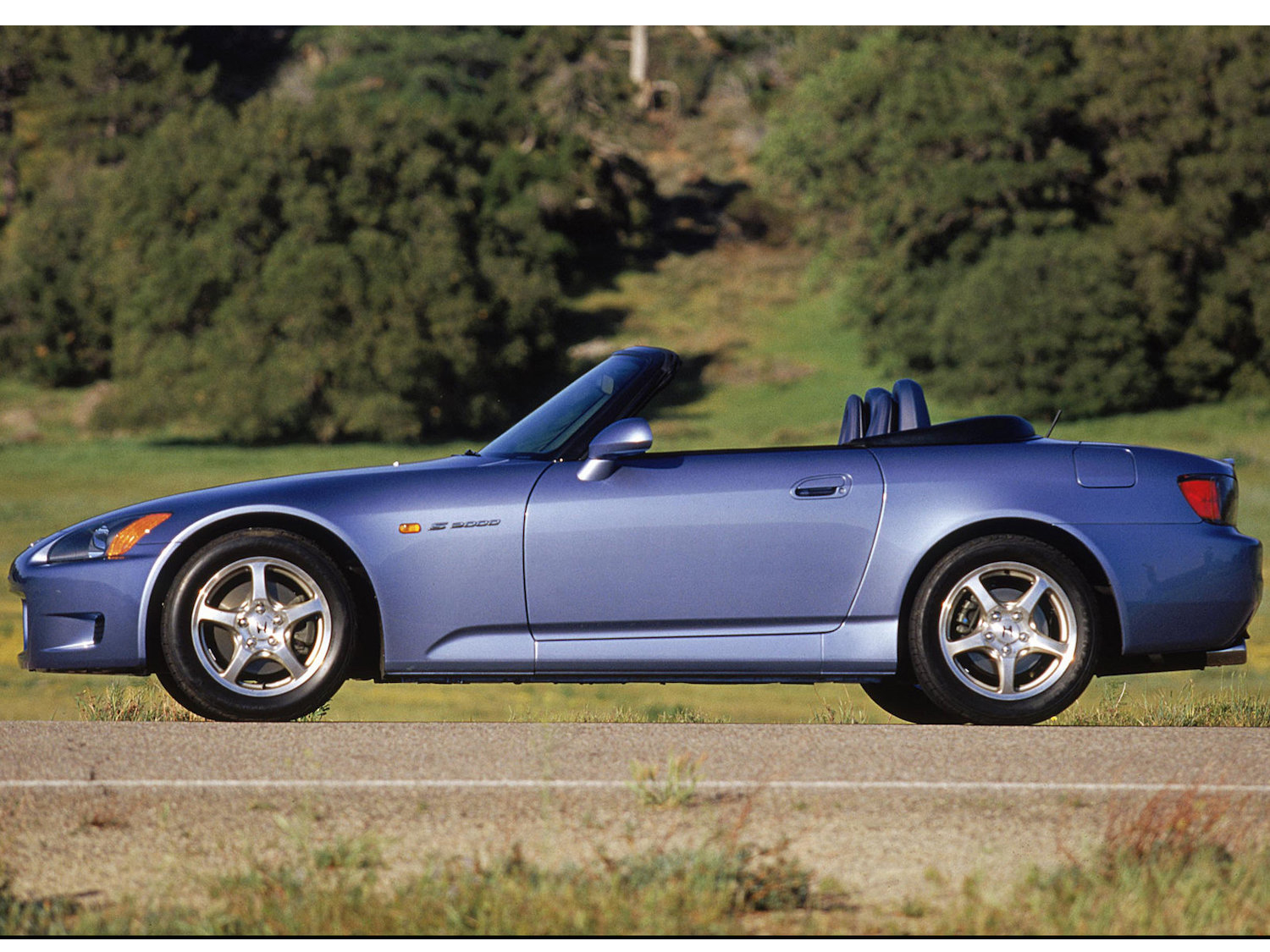2000–03 Honda S2000 values have surpassed contemporary Boxsters and Z3s
The late 1990s was a nice time for Honda fans, maybe the nicest time of any. At the entry level, we had the fantastic Prelude SH Civic Si sport compacts. For something a little more hardcore, the Integra Type-R was coming to the States in small batches, too. And at the top of the line, for the folks with deep pockets, the original NSX was still alive and well.
That kind of lineup was already plenty to keep us dreaming, but Honda spoiled us even more for the new millennium by adding the S2000. The car pretty much perfected the modern roadster, distilling the elements of a classic driver’s car and then mixing them with Honda’s race-bred 21st century technology and bulletproof reliability. When introduced it was cheaper, better, and nicer to look at than its German rivals while also a step up from the Miata in just about every way.
“Aimed at the sports car purist,” as Honda put it, the S2000 lasted from 2000–09 in two distinct series and gained a loyal following from tuners and track day/autocross addicts to casual enthusiasts. Since the S2000 bowed out a full decade ago, though, nobody (especially Honda) has built quite the same kind of car—at least not with the same level of driving experience, combined with everyday usability in that mid-range price point.
No wonder, then, that clean S2000s these days are more in the modern collectible category than just used old Hondas. While the S2000 never depreciated enough to really be considered “cheap,” prices for clean examples have been creeping up for several years, and the S2K currently carries a Hagerty Vehicle Rating of 78.

What does that mean? The Hagerty Vehicle Rating is based on a 0–100 scale and considers the number of vehicles that are quoted and insured through Hagerty and takes into account auction and private sales results. A vehicle that is keeping pace with the overall market has an HVR of 50. So at 78, the S2000 isn’t red hot, but it is comfortably leading the rest of the market.
Maybe the biggest part of the S2000’s appeal, and part of why it indeed is leading most of the collector car market, is that it’s such a good all-rounder but still a proper, no-excuse sports car. All the ingredients are there—rear-wheel drive, a naturally aspirated all-aluminum engine mounted in the front but set back far enough for 49:51 weight distribution, a close-ratio six-speed manual, sophisticated suspension, firm bucket seats, light overall weight of about 2800 pounds, and a top that goes down. Oh, and a nifty red starter button and an instrument cluster that looks like it’s from Blade Runner, all in a car screwed together at the same factory as the NSX by a company known for—almost more than anything else—building cars that don’t break. What more could you ask for? It might have been timed perfectly for the tuner craze and the Fast and the Furious generation, but the S2000 is plenty good enough just as it rolled out of the showroom.
Now back to that gem of an engine. The original 2000–03 S2000, known as the AP1, has a 1997-cc twin-cam four with 11:1 compression and Honda’s pioneering VTEC variable valve timing system that makes 240 horsepower at 8300 rpm and 153 lb-ft of torque at 7500 rpm. And in true VTEC fashion, not much of anything happens low down in the rev range. A proper driver’s car, the S2000 really makes you work for it, winding it up to 7000–8500 rpm where all of the action is. It can be a little disconcerting if you’re used to driving a big American V-8 that gives you plenty of grunt at half that engine speed, but once you hear an S2000 at full song from the cockpit, you’ll never want to take your foot off the floor. Another good piece of news is that the S2K only came with a six-speed. No slushy automatic or flappy paddles here. Yet more good news is that, being a VTEC Honda, the engines are mostly bulletproof and a high mileage car shouldn’t be a red flag. Other than the usual crash damage, extensive mods (and the extra wear on factory components that results), and a handful of rust spots, there are no big, scary gotchas.
There weren’t many major changes over the S2000’s first four years and there were few options, so most of your choices come down to condition and color. If you want a Spa Yellow one, you’ll have to go for 2001 models or later, and for Suzuka Blue you’ll have to go for 2002 or later. A glass rear window and some minor improvements to the suspension also arrived in 2002, but that’s about it.

For 2004, Honda gave the S2000 its only significant update, called the AP2 version. The AP2 added larger wheels and a mild facelift for the body, while the suspension was further refined and the engine enlarged to 2.2 liters, bringing more peak torque and a broader torque curve, as well as a lower redline on its digital tach. Whether the AP1 or the AP2 is better is a constant source of debate, because there is no real right answer. The AP2 has more usable power and refined suspension, but many people like the looks of the original better. Ask anyone why they’d pick an AP1 and they’ll probably tell you “because it revs to 9000 rpm” and leave it at that.
The original MSRP for an S2000 in its first year was about $32,000, or approximately $47,600 today. That was comfortably less than a first-gen Porsche Boxster or a well-optioned BMW Z3 at the time but, oddly enough, an S2000 is worth comfortably more than both of those cars today. Oh, how the tables have turned. We added the 2000–03 cars to the Hagerty Price Guide a couple of years ago, and while they don’t yet trade for more than what they cost new, values are up nearly 5 percent since then, topping out at $47,400 for a best-in-the-world condition #1 (concours) car. A really good low-mile condition #2 (excellent) S2000 is a more reasonable $25,100. Even a rougher high-mileage condition #4 (fair) example is worth $9K.
Barrett-Jackson sold a 921-mile 2001 model for $49,500 earlier this year, which is the highest auction result we’ve seen in 2019. We’ve also seen some solid but higher-mileage cars sell for the low- to mid-20s at Mecum this year, and clean unmodified AP1 S2000s show up regularly on Bring a Trailer, where they typically trade hands from the high teens to the high 20s, depending on mileage.
Even more than strong sales prices, the biggest thing pushing the S2000’s high Hagerty Vehicle Rating is buyer interest, which we measure by insurance quote activity. The number of quotes is up 55 percent over the past year for S2000s, which is higher than almost any other car we track values for. And since the S2000 lasted right through Millennials’ defining years, these cars are cemented in the minds of people who came of age in the 2000s, just as the Supra is for people who came up in the ’90s. Unsurprisingly, S2000s are disproportionately popular among younger buyers, with 39 percent of quotes for 2000–03 S2000s coming from Millennials, even though they make up just 21.4 percent of the quotes overall. Longer term, that suggests that S2000s aren’t likely to get any cheaper.












Hi,,,, I have a 2000 S2000 (VIN 3094) with only 60K miles on it. All 10 matching VINs, never been in an accident, never driven in rain or snow. I’m trying to figure out how much it is worth.